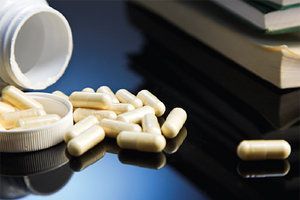Because they have yet to pass national legislation protecting the chiropractic profession, Japanese DCs are in a similar situation that U.S. DCs faced. We were fortunate enough to be able to pass chiropractic licensure state by state. The DCs in Japan must accomplish this nationally, which has proved to be an extremely difficult task. And in spite of their efforts, Japanese DCs are currently faced with two chiropractic professions.
Promoting the Pharma Team to the Majors: Research Bias and Deception
Baseball aficionados will instantly recognize the meaning of this headline: Big Pharma is indeed big – Major League stuff, having vaulted into a position of dominance that may keep at least some clinical researchers up at night. Basically, a cornucopia of evidence suggests that, at best, the pharmaceutical industry has tweaked the research agenda and dissemination protocol in its favor, regardless of the science. At worst, there are examples in which Big Pharma has actually fudged results.
Indeed, even the medical journals have either raised alarm or fallen under industry's influence more than one might have reckoned at the outset. Consider a few choice quotes from the medical journal editors themselves:
- Marcia Angell, former editor of The New England Journal of Medicine: The pharmaceutical industry has become "primarily a marketing machine," co-opting "every institution that might stand in the way."1
- Jerry Kassirer, also a former editor of NEJM, pointed out that the "moral compass of many physicians has been deflected by the pharmaceutical industry."2-3
- Richard Horton, editor of the Lancet, wrote in March 2004 that "journals have devolved into information laundering operations for the pharmaceutical industry."4
A Bleak State of Affairs

From where does this state of alarm come? Unfortunately, we have multiple streams of evidence to choose from, many of which have been summarized in a revealing article by Smith.3
- After reviewing all the trials they could locate dealing with nonsteroidal anti-inflammatory pharmaceuticals for arthritis funded by manufacturers, a team of investigators concluded that, out of 56 trials identified, not one presented results unfavorable to the company that sponsored the trial. All trials presented the manufacturer's product as either outperforming or matching the comparison treatment.5
- A systematic review of 30 studies retrieved 16 clinical trials or meta-analyses, 13 of which produced results favorable to the sponsoring companies. Turns out the studies funded by a company were four times more likely to have results favorable to that company than investigations supported by other parties. Five of the studies that addressed economic evaluations bore favorable outcomes to the sponsoring company in every case.6
- Looking further into 136 research projects addressing a type of malignant blood disease, some of the same authors from the example immediately preceding confirmed the disparity of positive results depending upon the funding source. When the study was funded by a for-profit source, 74 percent of the trials favored the new treatment from that source. But when the study was supported by a nonprofit source, only 47 percent of the trials favored the new treatment.
Worse, a significantly higher incidence of inferior controls were identified in those trials under for-profit as opposed to nonprofit support (60 percent vs. 21 percent). A statement by the authors said it all, to the effect that the "‘uncertainty principle' (clinical equipoise) appears to have been violated, generating a bias in research."7 - An observational study of 370 randomized drug trials included in a meta-analysis from Cochrane Reviews found very much the same thing; i.e., that the experimental drug was recommended in 51 percent of the trials supported by industry, but only in 16 percent of the trials funded by nonprofit sources.8
- Between two-thirds and three-fourths of the trials published in such major journals as JAMA, NEJM, Annals of Internal Medicine, and Lancet are funded by industry.9
But It Gets Worse
- Numerous clinical trials sought a head-to-head comparison of efficacy of two antifungal agents, one (fluconazole) manufactured by Pfizer and the other (amphotericin B) a product of Merck. The problem? Amphotericin B was either mixed with a neutral agent or administered inappropriately (oral administration instead of injection), so its effectiveness was put at a distinct disadvantage. Predictably, fluconazole came out on top. The bigger problem here was that 80 percent of the authors responsible for this work either had grant support or salaries from Pfizer, the producer of fluconazole.10 Somehow, these results made it past the peer reviewers into the journals.
- Amplifying data such as this is the fact that Big Pharma seems to have amassed a record of generating multiple (referred to as "sausage") publications using some of the same data in each. The result is that the company's results are oversampled by unsuspecting authors of meta-analyses or systematic reviews so that such results are overrepresented. This has been confirmed with clinical trials involving NSAIDs,11 risperidone12 and odanestron.13
But It Gets Even Worse
- According to the Data Quality Act of 2000, special-interest groups may actually challenge the value of scientific information used by federal agencies for making regulatory decisions.14
- Better in Britain? Don't bet on it. The House of Commons in the U.K. recently produced a report concerning the overall pervasiveness of the pharmaceutical industry, including recommendations to implement an effective regulatory regime. Problem was, if you look at the preface of the directive, which I swear is accurate, you see something else:
"Pharmaceutical companies will inevitably continue to be the dominant influence in deciding what research is undertaken and conducting that research, publishing it and providing information to prescribers"15
Seriously? If that's not shooting a legislative effort in the foot (heart, actually), I don't know what is. I would have to venture that this statement has just given away the keys to the Thunderbird, to paraphrase a popular expression from The Beach Boys.
How They Do It – and What We Can Do About It
According to Smith, the tweaks industry can use to gain a biased advantage that can escape peer reviewers include the following:4
- Conducting a trial of one's drug against a treatment already known to be inferior
- Running one's drug against concentrations of a competitor drug outside of its optimum effectiveness (high or low)
- Selecting only those endpoints out of many in a trial that display favorable results
- Selecting only those centers out of a multicenter trial that present favorable results
- Presenting results that appear to have the most impact, such as stating relative rather than absolute risks
Thankfully, there has been some pushback. Registration of trials in the government database ClinicalTrials.gov – a prerequisite for publication in most indexed journals – is intended to provide greater transparency on the conduct of clinical trials, including allowing negative results to be seen, rather than hidden from public view. And the editors of PLoS Medicine havemade it clear they will not become "part of the cycle of dependency ... between journals and the pharmaceutical industry."16
These are some of the challenges clinical researchers involved in non-pharmaceutical branches of health care are facing. As with PACs and so many other areas in our lives, it is clear Big Money and Big Pharma have infiltrated the Majors and are driving much of the research agenda and how it is disseminated. Perhaps with minds like those of Billy Beane – who was able to farm a Major League baseball team that outperformed many of its high-salaried cohorts by using advanced statistics (sabermetrics)—nonpharmaceutical health care researchers will be able to make more headway that, under the current regime, has still been commendable.
References
- Angell M. The Truth About Drug Companies; How They Deceive Us and What to Do About It. New York, NY. Random House, 2005.
- Kassierer JP. On the Take: How Medicine's Complicity With Big Business Can Endanger Your Health. New York, NY: Oxford University Press, 2004.
- Smith R. Medical journals are an extension of the marketing arm of pharmaceutical companies. PLoS Med, 2005;2(5):e138.
- Horton R. The dawn of science. New York Review of Books, 2004;51(4):7-9.
- Rohon P, Gurwitz JH, Simms RW, Fortin PR, Felson DT, et al. A study of manufacturer-supported trials of nonsteroidal anti-inflammatory drugs in the treatment of arthritis. Arch Intern Med, 1994;154;157-63.
- Lexchin J, Bero LA, Djulbegovic B, Clark O. Pharmaceutical industry sponsorship and research outcome and quality. BMJ, 2003;326:1167-70.
- Djulbegovic B, Lacevic M, Cantor A, Fields K, Bennett CL, Adams JR, Kuderer NM, Lyman GH. The uncertainty principle and industry-sponsored research. Lancet, 2000;356:635-8.
- Nielson BA, Chen W, Gluud C, Kjargard LL. Association of funding and conclusions in randomized drug trials: a reflection of treatment effect or adverse events? JAMA, 2003;290(7):921-8.
- Egger M, Bartlett C, Juni P. Are randomized controlled trials in the BMJ different? BMJ, 2001;323:1253.
- Johansen HK, Gotzsche PC. Problems in the design and reporting of trials of antifungal agents encountered during meta-analysis. JAMA, 1999;282(18):1752-9.
- Gotzsche PC. Multiple publication of reports of drug trials. Eur J Clin Pharmacol,1989;36:429-32.
- Huston P, Moher D. Redundancy, disaggregation, and the integrity of medical research. Lancet, 1996;347:1024-6.
- Tramer MR, Reynolds DJM, Moore RA, McQuay HJ. Impact of covert duplicate publication on meta-analysis: a case study. BMJ, 1997;315:635-40.
- Wagner W. The perils of relying on interested parties to evaluate scientific quality. Amer J Pub Health, 2005;95(1):S99-S106.
- House of Commons Health Committee. The Influence of the Pharmaceutical Industry. Fourth Report of the Session, 2004-2005, Volume I. Ordered by the House of Commons, printed 22 March 2005.
- Barbour V, Butcher J, Cohen B, Yamey G. Prescription for a healthy journal. PLoS Med, 2004;1: e22.



